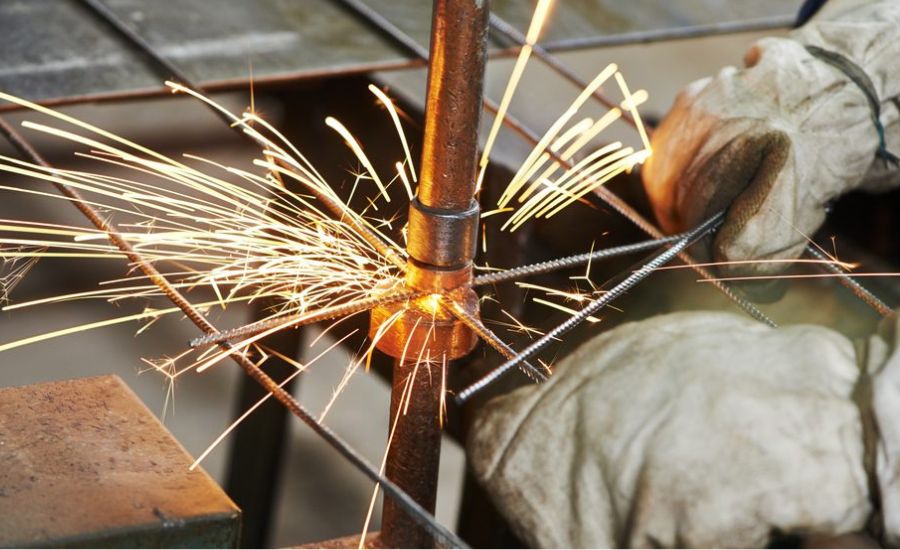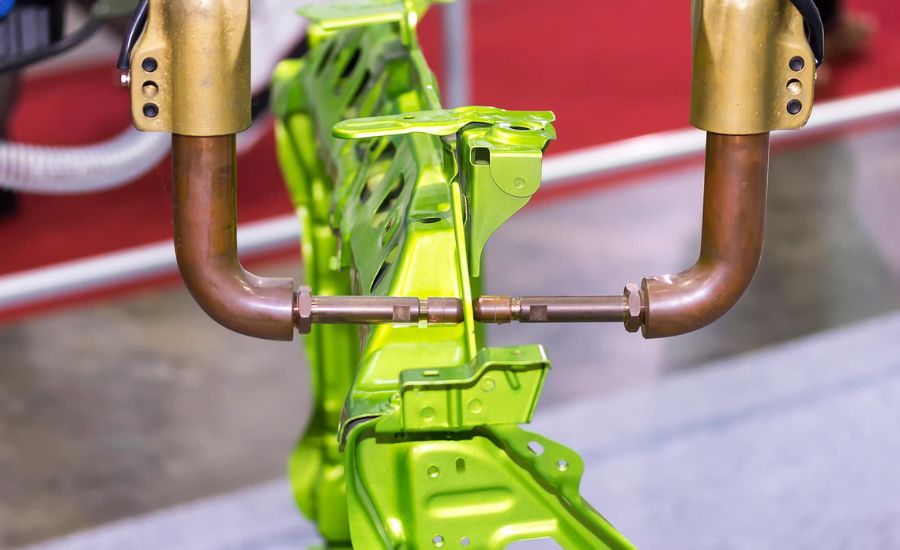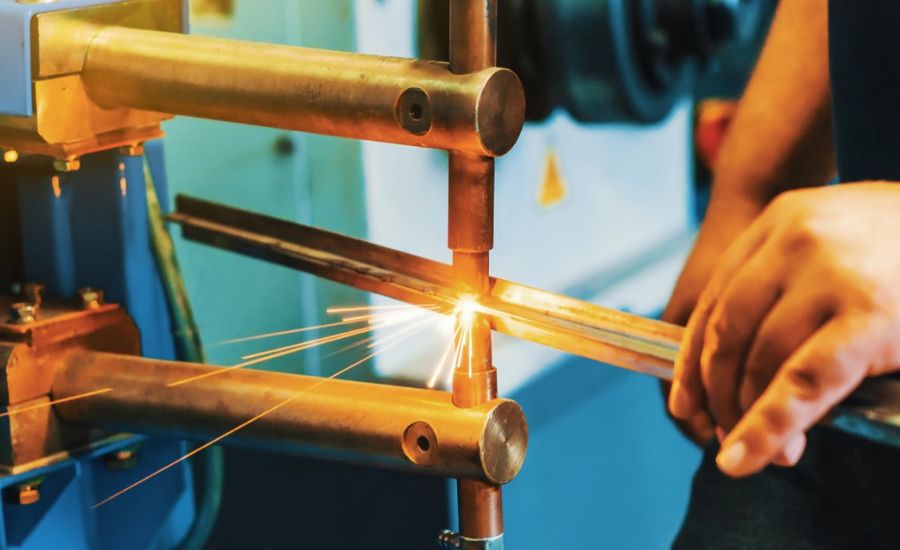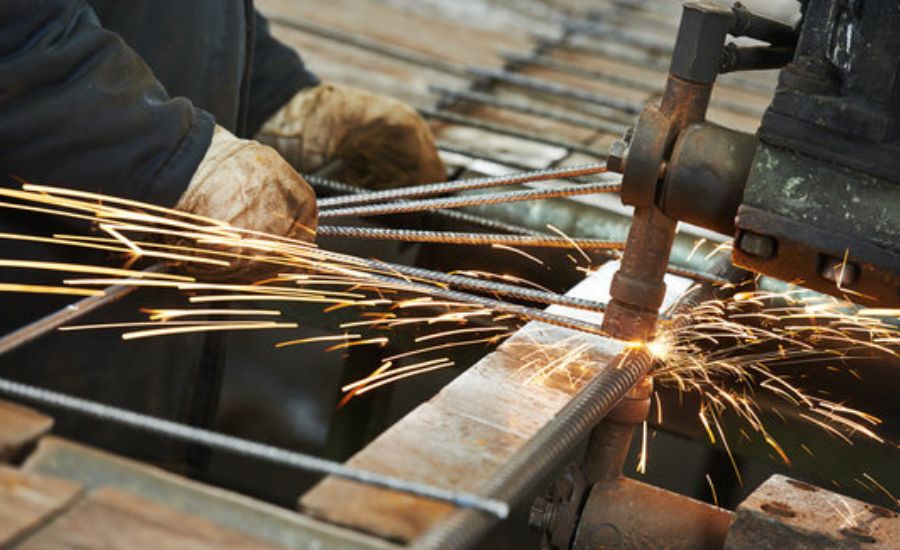Are you wondering what spot welding is and how it works? If so, you’re in the right place.
Spot welding is a process that uses electricity to quickly join multiple metal sheets together. It is a fairly straightforward process, but it requires skill and precision to do it properly. Spot welders use heat generated by the electricity to create a strong bond between the materials, which can range from thin sheet metal to heavier structural steel.
In this article, we will cover what spot welding is and how it works in detail so you have a better understanding of this powerful technology.

Contents
- 1 What is spot welding?
- 2 How does the spot welding process work?
- 3 The components of a spot welding machine
- 4 The different types of spot welders
- 5 Different types of spot welding electrodes
- 6 Advantages and disadvantages of the spot welding method
- 7 Common applications for spot welding
- 8 Spot welding safety measures
- 9 Conclusion
- 10 FAQ
What is spot welding?
Spot welding (also known as resistance spot welding) is a process that joins two pieces of metal together by heating them with an electric current.
The actual weld is made at a single spot or junction, which means that the welding can be done quickly and with precision. It’s an economical way to join sheets of metal, so it’s widely used in many different industries like automotive, electronics, and telecommunications.
The resistance spot welding process works by joining two pieces of metal together at one point using heat which is generated by the metal’s internal resistance to the electric current.
To join them effectively, the two pieces are clamped together between two electrodes, which are connected to an electrical source. When the current is applied, it causes enough heat through the channel of current through resistive materials for the metal to melt and fuse — the spot weld.
The key here is precision: Spot welding only happens at one specific point of contact between the two pieces of metal and only takes a few seconds for each weld, so it’s much faster than other welding methods.
It also requires less equipment and setup time than other alternatives like arc welding or gas welding, making it a popular choice among manufacturers who need economical and efficient joining solutions.

How does the spot welding process work?
Spot welding is a welding process in which heat is generated by electricity to join two metals together. This type of welding utilizes the three main components of a spot welder—two electrodes and current flowing through them.
To spot weld, two electrodes are placed on opposite sides of the metal pieces being joined. Then, a powerful electric current is sent through the electrodes. The current creates an electric arc and heats the metal pieces to temperatures of up to 10,000°F (5,537°C).
The electrodes must have a higher melting point than the workpieces, for example low carbon steels. The heat weld nugget both pieces and fuses them.
This entire process only takes a few seconds.
Depending on the size and type of metal being welded, the exact amount of time can vary.
During this brief time, the electrodes are held in place so that they can create the necessary heat needed to complete the weld nugget. Spot welding is most often used in automotive manufacturing because it is quick and efficient at joining sheet steel components together.
The components of a spot welding machine
Spot welding machines are made up of three main components: a power source, a welding head, and an electrode holder.
- Power source
The power source supplies the energy needed to complete the resistance welding process, ranging from 2-6 KVA (Kilovolts-amperes). This voltage is converted to a high-frequency welding current that passes through the electrodes at a rate of up to 20 cycles per second.
- Welding head
The welding head connects the two pieces of metal while they are clamped securely in place. It holds two electrodes with variable curves and lengths, allowing for flexibility when adjusting electrode force for thicker or thinner materials. The head also helps to keep the weld area free from debris and other contaminants that can impede stable high-quality welding results.
- Electrode holder
The electrode holder is connected to the power source and transfers welding current between the electrodes and welding work material during the welding process. The holder features adjustable mounting arms, which makes it easier to adjust electrode positions and maintain consistent contact with both parts of the joint.

The different types of spot welders
Spot welders come in several different types, each offering their advantages depending on the materials needing to be joined and the power requirements of the job. The three most common types are:
- Resistance spot welding
Resistance spot welding uses a combination of heat and applying pressure to join two pieces of metal together. Resistance spot welding is best for projects where small and thin materials are being used, as the amount of heat generated is minimal.
Copper is used for electrodes because it has a great thermal conductivity and low electrical resistance compared to other metals, such as low-carbon steel. Unfortunately, copper electrodes degrade fast on the surface of zinc alloys, resulting in poor weld quality.
- Air-cooled resistance spot welding
Air-cooled resistance spot welding provides more power than its counterparts and comes with the added benefit of a built-in cooling system. This makes resistance spot welding the ideal choice for joining thicker or heavier materials together.
- Inverter spot welders
Inverter spot welders are energy efficient, using less power and providing greater control over electric current and weld time. They are also extremely versatile, allowing for both spot welding and seam welding capabilities with a single machine.

Different types of spot welding electrodes
While traditional spot welding involves two electrodes, there are several different types of electrodes available for use in spot welding. Each type has its own set of benefits and drawbacks, and the one that is right for your application will depend on the material thermal conductivity being welded and the desired outcome.
- Spot welding copper alloy electrodes
Copper is utilized for electrodes because it has a high thermal conductivity and a low electrical resistance compared to most metals.
The only downside to spot welding copper electrodes is that they tend to wear out faster than other types, requiring more frequent replacements since the temperature is way above the melting point of copper electrodes.
To weld copper, use an electrode constructed of an alloy with high electrical resistance and a melting temperature substantially higher than copper’s melting point.
- Tungsten
Molybdenum and tungsten electrodes are much harder than copper alloy electrodes, which makes them ideal for welding thicker materials or when higher levels of strength are needed in the spot weld area. However, they cannot conduct electricity as efficiently as copper electrodes so they require more voltage input to produce a quality weld.
- Graphite
Graphite welding electrodes are often used for spot weld aluminum and other non-ferrous metals. Since graphite does not heat up as quickly as tungsten or copper electrodes, it may take longer to get the same results, but it will produce a stronger weld with less heat generation.
In addition to these three types of electrodes, there are also powdered metal-coated electrodes available which can be used to spot-weld stainless steel and other hard materials.
The quantity of heat produced is determined by the metal’s thermal conductivity and electrical resistance, as well as the timing of the current. Ultimately, different applications may require different types of electrode force – so make sure you choose the right one for your needs!

Advantages and disadvantages of the spot welding method
Spot welding is a fast, efficient, and economical way of joining metals. It is widely used in the automotive industry for joining sheet metal components. While it has many advantages, it also comes with some drawbacks that may prevent its use in some applications.
- Advantages of spot welding
The primary advantage of spot welding is that weld time is extremely low. Spot welds can be completed much faster than other types of welding such as arc or TIG welding. It is also much less expensive than these other types of welding.
Spot welding requires minimal setup time, which helps to bring down costs and improve efficiency even further without damaging weld quality. Additionally, spot welds have a neat, uniform appearance which helps to enhance the overall aesthetics of the finished product. Any metal alloy with a high electrical resistance can be an ideal choice in general.
- Disadvantages of spot welding
The main disadvantage of spot welding is that it is not suitable for thicker materials as it can cause issues with distortion and warping due to the high electrode force and temperatures required for spot welding steel.
It can also cause damage to the material if it is used incorrectly or too close together as it relies on the pressure being applied to join two pieces together properly.
Finally, spot welds may not provide optimal strength compared to alternative welding methods such as TIG or arc welding, so if structural integrity or weld quality is required then a more robust method should be considered instead.

Common applications for spot welding
Spot welding is useful in the creation of several everyday items, from automotive parts to kitchen appliances.
It is used to construct metal shelving, furniture, toys, and nearly any item which requires metal plates and/or rods to be joined together.
To give an idea of where you can find spot welds in your daily life, here are a few common applications for spot weld:
- Automotive manufacturing: Robotic spot welding is used in the assembly of components such as airbags and fuel tanks
- Electronics: Spot weld is used extensively in the production of motherboards and electrical connectors
- Metal fabrication: Spot welds are commonly used to join two pieces of steel or other metals together
- Plumbing fixtures: Spot welds can be found in everyday plumbing fixtures like shower heads and faucets
- Home appliances: Dishwashers, washing machines, and refrigerators all make use of spot-welding robots for their internal components. The same is true for cookie cutters, which are made by spot-welding straps together.
Spot welding isn’t limited to these applications – the possibilities are limitless! With its versatile advantages, spot welding has become essential for high-volume manufacturing lines all over the world.
Spot welding safety measures
Spot welding is a powerful and efficient tool for joining two pieces of metal together, but it also comes with certain safety risks. The broad range of spot welding safety measures helps to reduce such risks, including:
- Protective clothing & equipment
Protective clothing and equipment should be worn while spot welding, such as flame-resistant overalls, goggles or face shields, leather gloves, and air filtration masks.
- Fire hazards
Frequent monitoring of the temperature of the material being welded is essential to prevent the material from catching fire. In addition, a fire extinguisher should be close by in case one is needed.
- Electrical shock
It is important to use proper grounding techniques to ensure that any voltage generated from the weld does not cause harm. Additionally, using low-resistance welding materials and maintaining good electrical contact between the parts being welded will help minimize the risk of electrical shock.
By taking proper safety measures for the spot welding process, you can ensure your job site remains safe and productive at all times.

Conclusion
Finally, spot welding is a reliable and efficient welding technique for combining sheets, components, and other welding work. A spot welding machine uses electricity to establish a strong, long-lasting connection between two pieces of metal, allowing the components to be bonded fast and securely.
Spot welding is a fast and low-cost procedure that is suited for large-scale manufacturing of metal goods and components. Spot welding machines are widely utilized in a variety of sectors, including automotive, medical, and electronics, due to their demonstrated benefits.
We hope this article helps you understand what is spot welding and how it is working.
FAQ
What is spot welding?
Spot welding is a process where two or more metal sheets are connected by the application of heat and pressure. It is commonly used for joining sheet metal components, such as car bodies, hulls, and appliances.
Because the spot welding procedure does not require the use of flux or filler material to make a junction, the overall material costs of such operations are reduced.
What machines are used for spot welding?
Spot welding machines typically consist of two electrodes that provide the electric current and pressure required for the welding process. The electrodes are usually copper and alloys, such as nickel-plated steel. They also have an adjustable timer that helps to control the weld’s duration.
What materials can be used with spot welding?
Spot welding can be used with almost any type of ferrous material, such as mild steel and stainless steel. It can also be used with some non-ferrous metals, such as aluminum alloy as well as copper. Any metal alloy with a high electrical resistance, such as low-carbon steel, might be an ideal choice in general.
What is meant by spot welding?
Spot welding or resistor spot machining are welding processes that use electrical resistance. It can be used for welded parts by using alternating electrical current to enclose two or more sheets.
Why use a spot welder?
Because spot welding works, the technique can be used for welding thin sheets in the right places at the right angle. The thin metals may burn quickly, while spot welding is applying pressure and heat or electrical energy to create the melting temperature.
What is the difference between spot welding and MIG welding?
Spot welding is a metal welding technique that is anchored to two metal electrode wires. A copper alloy electrode is connected to a welded metal with an electrical current.
What are the 3 stages of spot welding?
The spot welding process can be split into three stages: Heat, Melting, flow dynamics & cooling.


